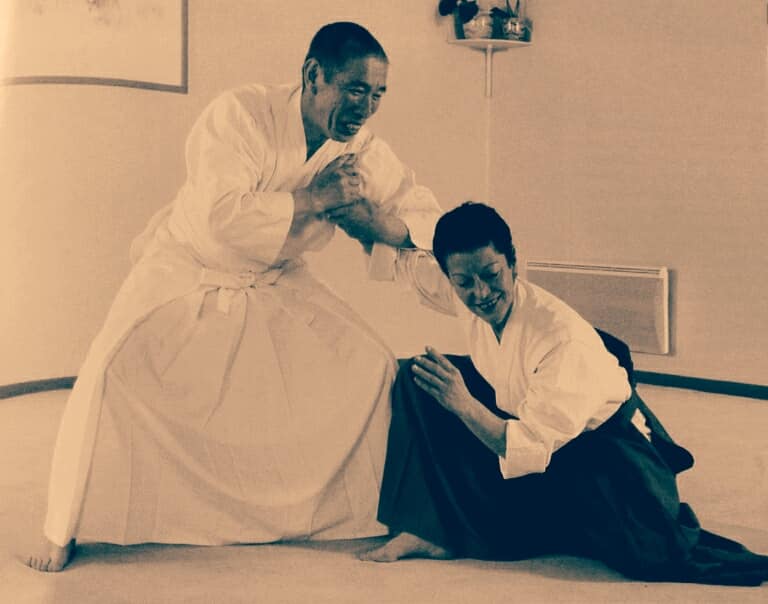During the later Heian period, various clothing edicts reduced the number of layers a woman could wear, leading to the kosode – lit., “small sleeve” – garment, previously considered underwear, becoming outerwear by the time of the Muromachi period (1336-1573 CE).
Originally worn with hakama trousers – another piece of underwear in the Heian period – the kosode began to be held closed with a small belt known as an obi. The kosode resembled a modern kimono, though at this time, the sleeves were sewn shut at the back, and were smaller in width than the body of the garment. During the Sengoku period and the Azuchi-Momoyama period, decoration of the kosode developed further, with bolder designs and flashy primary colours becoming popular.
During the Edo period (1603-1867 CE), both Japan’s culture and economy developed significantly, in particular during the Genroku period (1688-1704 CE), wherein “Genroku culture” – wherein luxurious displays of wealth were commonly displayed by the growing and powerful merchant classes (chōnin) – flourished.

At this time, the clothing of chōnin classes, representative of their increasing economic power, rivalled that of the aristocracy and samurai classes, with their brightly coloured kimono utilising expensive production techniques, such as handpainted dyework.
In response to this, the Tokugawa shogunate issued a number of sumptuary bans on the kimono of the merchant classes, prohibiting the use of purple or red fabric, gold embroidery, and the use of intricately dyed shibori patterns.
As a result, a school of aesthetic thought known as “iki”, which valued and prioritised the display of wealth through almost mundane appearances, developed, a concept of kimono design and wear that continues to this day as a major influence.
Source: Facebook/Aikido



